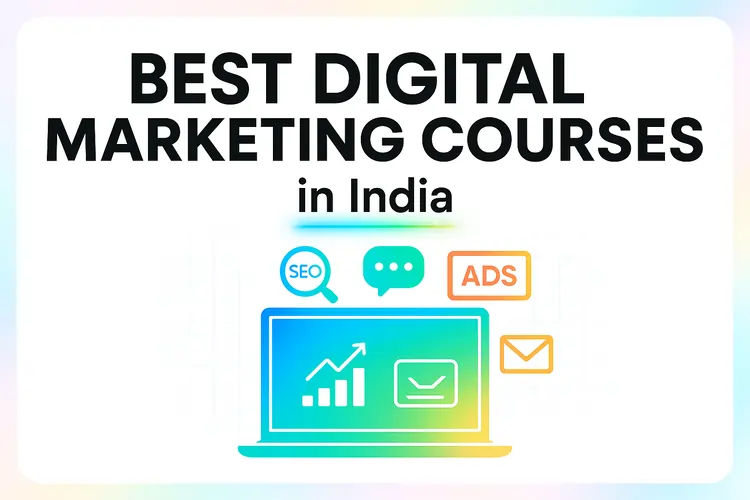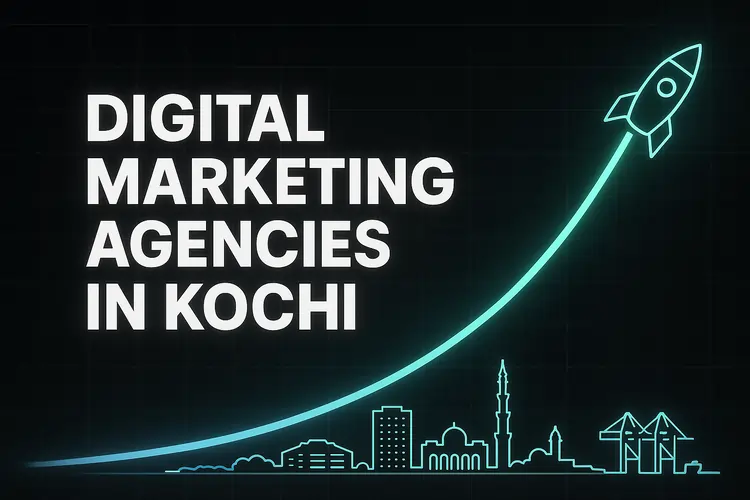Email automation is more than just scheduling emails. It’s a smart, AI-powered system that sends the right message to the right person at the right time — all without manual effort. This makes it one of the easiest ways for beginners to scale marketing while freeing up valuable time.
Think of it as your virtual sales assistant, working 24/7 to nurture leads, follow up with prospects, and re-engage past customers. Whether you run an online store, manage a service business, or build a personal brand, email automation can help you increase conversions without increasing workload.
In this beginner’s guide, you’ll learn what email automation is, how it works, the tools you need, and how to create campaigns that deliver results — even if you’ve never set one up before.
Your Roadmap to Mastering Email Automation
What is Email Automation?
Email automation is the process of sending targeted, personalized emails automatically based on user actions, preferences, or schedules — without manual sending.
In simple terms, email automation is like having a digital assistant who never sleeps. Once set up, it delivers the right email to the right person at the right time — without you lifting a finger. You create the emails and define the rules, and the system takes care of the rest.
How It Differs from Regular Email Marketing
Traditional email marketing requires you to manually send campaigns to your entire list. Email automation, on the other hand, is trigger-based — meaning the system sends messages automatically when certain actions happen, such as signing up, making a purchase, or abandoning a cart. This makes every message more relevant and timely.
Real-Life Beginner Scenarios
- E-commerce store: A customer adds products to their cart but doesn’t check out. An automated “cart reminder” email goes out with a discount code.
- Service business: A new lead fills out a contact form. They instantly get a welcome email with service details and a booking link.
- Online coach: Someone downloads your free guide. Over the next week, they receive a series of value-packed tips that lead to your paid program.
Why Businesses Use Email Automation
- Saves time by eliminating repetitive email tasks.
- Increases engagement with personalized, relevant messages.
- Boosts sales by nurturing leads until they’re ready to buy.
- Maintains consistent communication with minimal effort.
Whether you’re running an e-commerce store, managing a digital marketing campaign, or building a personal brand, email automation lets you communicate at scale while keeping each message personal.
How Email Automation Works
Email automation works through a simple but powerful process: you set up rules (triggers), create emails, and let the system send them automatically. Here’s the step-by-step breakdown.
1. Choose Your Email Automation Platform
Select a tool like Mailchimp, ActiveCampaign, or HubSpot that fits your budget and features. If you need expert help, our digital marketing services can guide you in choosing the right one.
2. Define Your Goal
Decide if you want to welcome new subscribers, recover abandoned carts, or nurture leads. For lead generation, see our Google Partner lead generation services.
3. Set Up Triggers
Triggers are events that start your automation, such as sign-ups, purchases, or inactivity. Learn how triggers work inside a digital marketing funnel.
4. Create Your Email Sequence
Write and design a series of emails tailored to each trigger, focusing on relevance and value.
5. Test Your Automation
Send test emails to yourself, check links, and ensure the flow works correctly before going live.
6. Monitor and Optimize
Track open rates, click-through rates, and conversions. Adjust subject lines, timing, and content for better results.
This structured approach ensures your email automation is not only easy to manage but also delivers consistent results from day one.
Benefits of Email Automation
Email automation is more than a time-saver — it’s a growth engine that can improve conversions, strengthen relationships, and scale your marketing without increasing effort. Here’s why businesses of all sizes are embracing it.
📈 Boosts Conversions
Automated sequences send the right message at the right time, increasing click-throughs and sales. See how we improved conversions in our Google Ads case study.
⏳ Saves Time
Once set up, campaigns run automatically while you focus on other priorities. Our digital marketing services can help you set this up fast.
🎯 Improves Targeting
Send personalized content based on customer behavior, boosting engagement and loyalty. Learn more in our marketing funnel guide.
🤝 Builds Relationships
Consistent, relevant emails keep your audience engaged over time, turning one-time buyers into loyal customers.
📊 Data-Driven Decisions
Automation platforms track opens, clicks, and conversions so you can optimize every campaign.
💡 Supports Multiple Goals
Whether your goal is sales, engagement, or customer retention, automation can be tailored to match.
Best Email Automation Tools for Beginners
Choosing the right email automation platform can make the difference between a smooth, results-driven campaign and one that underperforms. Here are the top beginner-friendly tools worth exploring.
| Tool | Best For | Pros | Pricing |
|---|---|---|---|
| Mailchimp | Small businesses & e-commerce | Easy to use, great templates, free plan available | Free, paid from $13/month |
| ActiveCampaign | Advanced automation & CRM | Powerful automation, great segmentation, CRM included | From $29/month |
| MailerLite | Simple automation & newsletters | Beginner-friendly, affordable, good design options | Free, paid from $10/month |
| ConvertKit | Content creators & bloggers | Great for creators, visual automation builder | Free, paid from $15/month |
| HubSpot | All-in-one marketing & CRM | Robust features, integrates with everything, great analytics | Free, paid from $20/month |
If you’re unsure which platform suits you best, our digital marketing experts can help you choose, set up, and optimize your email automation for maximum ROI.
How to Set Up Email Automation
Setting up email automation is easier than it seems — especially when you break it into simple steps. Follow this workflow to go from zero to a fully functioning automated system.
1. Pick the Right Platform
Choose a beginner-friendly tool like Mailchimp, ActiveCampaign, or MailerLite. If you need help selecting, our digital marketing experts can guide you.
2. Build Your Email List
Add opt-in forms to your website or landing pages to capture subscribers. Offer a lead magnet for faster growth.
3. Define Your Goal
Decide whether you want to welcome new subscribers, nurture leads, promote offers, or re-engage inactive users.
4. Set Up Your Triggers
Configure triggers based on user actions — sign-up, purchase, cart abandonment, or specific behaviors. Learn more in our digital marketing funnel guide.
5. Create Your Email Sequence
Write emails that deliver value, build trust, and drive action. Keep them short, clear, and mobile-friendly.
6. Test Before Going Live
Send test emails, check all links, and ensure the automation flow works correctly.
7. Monitor and Optimize
Track opens, clicks, and conversions. Improve subject lines, content, and timing for better results.
Common Email Automation Mistakes to Avoid
Email automation can deliver amazing results — but only if you avoid these common pitfalls. Many beginners make these mistakes without realizing they’re hurting engagement and sales.
❌ Mistake 1: Over-Automating Everything
Automating too many emails can make your brand feel robotic. Balance automation with personal, timely messages.
❌ Mistake 2: Ignoring Segmentation
Sending the same email to your entire list reduces relevance. Segment audiences based on behavior, location, or interests. See our funnel guide for targeting strategies.
❌ Mistake 3: Skipping A/B Testing
Not testing subject lines, content, or timing leaves conversions on the table. Always experiment and optimize.
❌ Mistake 4: Neglecting Mobile Optimization
Over 60% of emails are opened on phones. Ensure your templates are mobile-friendly and easy to read.
❌ Mistake 5: Forgetting to Track ROI
If you don’t measure results, you can’t improve. Track open rates, clicks, and conversions to refine campaigns.
Advanced Email Automation Strategies
Once you’ve mastered the basics, it’s time to take your email automation to the next level. These advanced tactics can dramatically increase engagement, conversions, and customer lifetime value.
🚀 Behavior-Based Personalization
Send emails triggered by specific customer actions, such as browsing certain pages or abandoning carts. See how triggers fit into a full-funnel strategy.
📅 Time-Zone & Activity Optimization
Schedule emails based on each subscriber’s local time or peak engagement window to maximize open rates.
🔄 Dynamic Content Blocks
Use automation platforms that swap content in real-time based on user preferences, purchase history, or location.
🎯 Predictive Segmentation
Leverage AI tools to predict which subscribers are most likely to buy and send them tailored offers.
💬 Multi-Channel Integration
Combine email automation with SMS, WhatsApp, and retargeting ads for a seamless omnichannel experience. Our digital marketing team can help you set this up.
Email Automation FAQs
Here are the most common questions beginners ask about email automation — along with clear, concise answers to help you get started confidently.
What is email automation?
Email automation is the process of sending targeted, personalized emails automatically based on user actions, preferences, or schedules — without manual effort.
Is email automation expensive?
Not necessarily. Many beginner-friendly platforms like MailerLite and Mailchimp offer free plans, while advanced tools may cost ₹800–₹2,500 per month depending on features.
Do I need coding skills for email automation?
No. Most modern tools offer drag-and-drop editors and pre-built automation templates, making it easy to set up without technical skills.
What types of emails can I automate?
You can automate welcome sequences, cart reminders, re-engagement campaigns, product recommendations, and event follow-ups — all based on user behavior.
How do I track the success of my automation?
Use built-in analytics from your automation platform to monitor open rates, click-through rates, and conversions. Adjust content, timing, and targeting based on performance data.
Need help setting up or optimizing your email automation? Our experts at The DM School can create a tailored strategy that saves you time and boosts conversions.
Start Automating Your Emails Today
Email automation isn’t just a marketing hack — it’s a long-term growth engine that saves you time, boosts engagement, and drives consistent sales. Whether you’re a small business owner, a coach, or an e-commerce brand, starting now means you can begin reaping the rewards sooner.
At The DM School, we help businesses set up powerful, result-driven email automation systems. From choosing the right platform to writing high-converting email sequences, we handle everything — so you can focus on running your business.
🚀 Ready to Save Time & Increase Sales?
Let our experts create a custom email automation strategy for your business. Book a free consultation today and start automating for growth.


